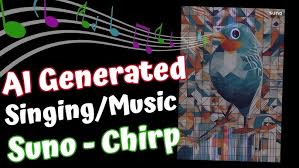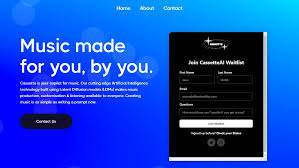Artificial intelligence is rapidly reshaping the way we create, consume, and interact with music. One particularly fascinating tool to emerge from this trend is Riffusion, an AI-powered system that can generate short music clips from simple text prompts.
If you've stumbled across AI music on social media or GitHub, you might be wondering: what is Riffusion, and how to use Riffusion? Is it just another novelty, or does it offer serious creative potential?
In this post, we’ll explain what Riffusion is, how it functions under the hood, who created it, what you can do with it, and why it's gaining popularity among musicians, hobbyists, and developers alike.

Understanding What Riffusion Really Is
At its core, Riffusion is an open-source AI model that generates music from text inputs using spectrograms. Developed in 2022 by Seth Forsgren and Hayk Martiros, Riffusion applies a unique twist on Stable Diffusion—the same technology used in text-to-image AI art generators—by adapting it to audio.
Instead of producing images or videos, Riffusion generates spectrograms, which are visual representations of sound. These spectrograms are then converted into playable audio using an algorithm that maps visuals to real audio signals.
So when you type in a phrase like “ambient jazz piano” or “synth pop beat,” Riffusion doesn’t create the music directly—it creates an image of what that music might look like, and then converts that image back into sound.
The Technology Behind Riffusion
To understand what makes Riffusion different from other music AI tools like AIVA or Suno AI, you need to look at the technology stack:
Based on Stable Diffusion
Riffusion is built on a modified version of the Stable Diffusion image generation model. Stable Diffusion, developed by Stability AI, is an advanced model trained on huge datasets to create high-quality visuals from text.
Riffusion adapts that concept for music by:
Training on spectrogram images of audio clips
Using prompt-to-spectrogram inference
Converting output spectrograms back into .wav audio using inverse Short-Time Fourier Transform (STFT) methods
Real-Time Music Generation
Unlike some music models that require heavy training or long processing times, Riffusion is designed for real-time output. You can type in a prompt and hear results within seconds, making it ideal for experimentation or performance art.
Open-Source and Community-Driven
One of the reasons Riffusion has exploded in popularity is because it’s open-source. The full codebase is available on GitHub, making it easy for developers and artists to customize, remix, or build apps around it.
GitHub link: https://github.com/riffusion/riffusion
How to Use Riffusion?
If you're still wondering what is Riffusion used for, here are a few practical and creative ways people are using it:
1. Rapid Sound Prototyping
Riffusion is a great tool for quickly generating music samples to inspire songwriting, video game sound design, or podcast transitions.
2. Creative Experiments
Artists are using Riffusion to mash up unexpected genres, blend sound styles, and explore generative creativity—without needing to play a single instrument.
3. Educational Projects
Because it uses visual data to create sound, Riffusion is being adopted in classrooms to teach students about spectrograms, sound waves, and AI.
4. AI Music Research
Academic labs and developers are leveraging the model to test new ideas in music generation and multimodal AI.
Who Created Riffusion?
Riffusion was developed by:
Seth Forsgren: a machine learning enthusiast and software engineer
Hayk Martiros: an AI researcher with a background in robotics and deep learning
They launched Riffusion in December 2022 as a weekend project that quickly went viral. As of June 2025, the project is still maintained by the community and original authors, but it has not evolved into a commercial product or company—yet.
Limitations of Riffusion
Although Riffusion is powerful, it’s not without its quirks. Knowing these limitations will help you use it more effectively:
Short audio clips: Most outputs are only a few seconds long (usually under 10 seconds).
Lower fidelity: Compared to full audio production tools like Logic Pro or FL Studio, Riffusion's audio quality is more experimental.
Limited control: You can’t yet fully control tempo, harmony, or instrumentation like in traditional DAWs.
Frequently Asked Questions About Riffusion
Is Riffusion free to use?
Yes. Riffusion is completely free and open-source. You can run it locally or use hosted versions online without payment.
Do I need coding experience to use Riffusion?
Not necessarily. There are beginner-friendly web UIs available, but using the local model or customizing it requires some Python and machine learning knowledge.
Can I use Riffusion-generated music commercially?
Yes. The model is released under the MIT License, allowing for commercial use as long as the license terms are preserved.
What makes Riffusion different from other AI music tools?
Riffusion uses image-based machine learning to generate sound, while most other tools rely on symbolic music generation (like MIDI) or waveform prediction.
Does Riffusion support full-length song creation?
Not yet. Most of its outputs are short riffs or loops. However, users are experimenting with chaining outputs together or using them as stems.
Final Thoughts: Why Riffusion Matters
Now that you know what Riffusion is, you can see it’s more than a gimmick. It’s a creative tool, a technological breakthrough, and a learning resource—all rolled into one.
While it won’t replace your DAW or professional sound engineer, Riffusion opens the door to a new way of thinking about sound. By turning text into music through image processing, it invites artists to explore the intersection of visual and auditory expression in unprecedented ways.
Whether you're a coder, a curious artist, or an educator looking to make sound science fun, Riffusion offers a new frontier worth exploring.
Learn more about AI MUSIC








